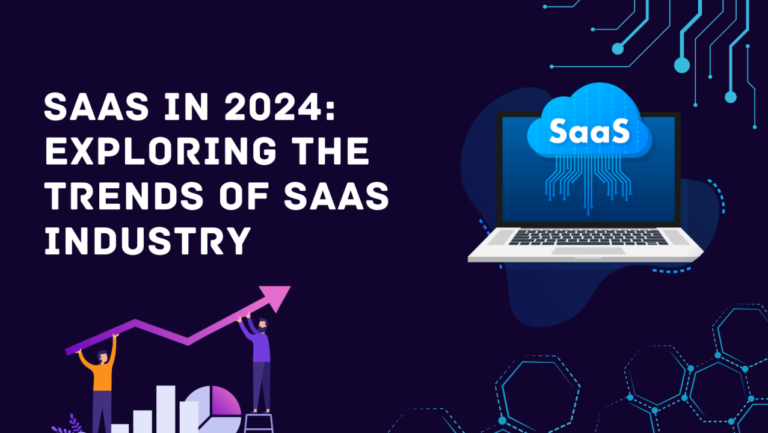Microservices, the buzzword lighting up the tech world since the late 2000s, is stealing the spotlight today. Google searches for “microservices” have doubled in the last five years, and for good reason! This architectural approach brings a buffet of benefits – scalability, flexibility, agility, and more. Giants like Netflix, Google, and Amazon have paved the way by transitioning from monolithic to microservices, partnering with offshore specialists for that extra edge.
The monolithic approach still clings to the default status for software applications. But, let’s face it, it’s facing its challenges – managing mammoth code bases, adapting to new tech, scaling struggles, and so on.
Is monolith outdated, and ready to retire? Is it time to hit the switch and transform your application into microservices magic? Will custom software development with microservices architecture be your golden ticket to business goals?
In this epic battle, we’re diving deep into the strengths and weaknesses of both architectures. The ultimate face-off: Microservices vs. Monolithic Architecture. Buckle up as we explore the intricacies, unravel the differences, and help you decide which path aligns best with your business aspirations. Ready to witness the clash of the architectures? Let the comparisons begin!
Beyond Monolithic Simplicity
The preferred method for developing software applications has traditionally been monoliths. Unquestionably, their original popularity is due to their uniform codebase, unified deployment, and simple debugging. This facilitates rapid iteration and feature delivery for developers, who gain from pooled resources and expedited development procedures.

However, as applications advance and complexity increases, the monolith’s drawbacks become more noticeable. Because tightly connected components cause changes to cascade, it is challenging to add new features or correct faults without affecting the system as a whole. Scalability becomes problematic since it is frequently necessary to scale the entire program to satisfy growing needs, which results in inefficient use of resources. Monoliths are also susceptible to cascade failures, which have the potential to bring down the entire system, due to their lack of isolation.
Comprehending Microservices Architecture
Delivering top-notch Software-as-a-Service (SaaS) solutions has become standard practice in the dynamic field of software development. Software developers and architects are continuously looking for novel approaches to create scalable and adaptable systems to satisfy the increasing needs of both consumers and companies. One such strategy that is rapidly gaining traction is Microservices Architecture.

A design pattern known as microservices architecture divides an application into several compact, loosely linked, and independently deployable services. With a microservices architecture, an application is divided into smaller, self-contained services, each of which is in charge of a particular business function, as opposed to the traditional monolithic method, which builds an application as a single, tightly linked unit.
The Monolith Challenge
Scalability and adaptability issues arose from monolithic systems as the SaaS market grew. This chapter examines the drawbacks of monoliths and how microservices are essential for getting around these limits.
The alternative to monolithic restrictions is the emergence of microservices. An extensive examination of microservices is given in this part, with special attention to their design, guiding principles, and potential for scalable and agile SaaS development.

Monolith architecture has several disadvantages, including complex and coupled systems, team autonomy, larger release cycles, and a monolithic database. Over time, these systems can become entwined, making it difficult to read and maintain. The development team’s autonomy becomes increasingly more work as the application grows, and feature merges can lead to conflicts. The release cycle is larger than a micro-service, and validation requires a large test suite. Monoliths often use outdated technology stacks, which can be problematic for applications that have been around for years. Additionally, any change in a less critical part of the application can cause issues that affect the entire application, including every functionality.
Monolith or Microservices?
It’s not a clear-cut decision, as you may have already surmised. It is more of a spectrum that one continually “shifts” along based on the stage at which your business is in. All SaaS apps, in our experience, eventually break down to some degree, but not usually into “pure” microservices.

You may make your own decisions by taking into account the following factors:
- Team structure and architecture: The main issue is communication and management overhead from multiple services. Application architecture organization depends on team organization, and it’s crucial to consider coordination and maintainability, considering concepts like Conway’s law and cognitive load.
- Technical overhead versus direct value: Managing multiple services requires communication, standardization, testing, deployment flows, and APIs, which can detract from developing direct value features. Small teams may find this overhead worthwhile but should be aware of it.
- Align your skills: What abilities and knowledge your team possess is a key deciding element. Is it aware of the methods, tools, deployment strategies, etc. required to support several (micro)services? If you’re not there yet, does it make sense to invest time in learning them at this point?
- Scalability and availability needed: Decomposition of your application(s), if done effectively, will lead to higher scalability and availability. Smaller deployment units make it simpler to scale each one separately and reduce the explosion radius when things get sticky. What do you need from us right now?
- Company growth rate: Understandably, many startups have high hopes for the future. In the near run, over-engineering might hinder your progress. Under-engineering is also capable of this. Ideally, the architecture you choose can grow along with your rate of expansion. Don’t plan; just build for what you’ll need today and perhaps tomorrow.
Microservice Benefits
Microservices, combining SOA, containerization, and DevOps, are becoming increasingly indispensable for application development. The adoption of container orchestration and related technologies like Docker and Kubernetes offers a scalable, flexible infrastructure for efficient microservice deployment and management.

Let’s examine the top ten advantages of microservices:
- Enhanced Scalability: Businesses may expand individual components independently thanks to microservices, which guarantees a more adaptable and economical resource management strategy.
- Faster Time to Market: Microservices enable developers to construct, test, and launch them independently, which expedites the development process and shortens the time it takes to provide new features and goods.
- Improved Resilience: Because microservices are separated, a single component failure won’t impact the system as a whole, making the application more fault-tolerant and robust.
- Easier Maintenance and Upgrades: Updating and maintaining a microservices-based application is easier and takes less time when the components are fewer and more focused.
- Greater Team Autonomy: Teams may work independently on various components with microservices, which improves communication and productivity.
- Cost Optimization: Businesses may save infrastructure expenses and improve resource consumption by scaling and deploying components individually.
- Increased Innovation Potential: Because microservices design makes it possible for businesses to test new concepts and ideas fast, it encourages experimentation and creativity.
The Microservices Odyssey explores the transformative journey of SaaS, embracing the promises of microservices. Microservices offer a paradigm shift in software development, offering agility, scalability, and flexibility. They also provide decentralized empowerment, allowing development teams to independently develop, deploy, and scale individual services. The modular nature of microservices allows for seamless scalability, enabling businesses to adapt and thrive. The journey highlights the unlimited potential of microservices, fostering a culture of continuous improvement and innovation.
The microservices ecosystem is a dynamic and diverse space, fostering resilience and inclusivity. Its continuous evolution is driven by the ever-changing technology landscape, requiring users to adapt strategies and tools. The journey is marked by visionary choices, such as adopting emerging technologies and aligning with future trends, which propel businesses toward a scalable future.
The Microservices Odyssey concludes with a call to innovation, highlighting the transformative power of microservices in adaptability, scalability, and resilience. As SaaS continues to shape industries, it’s essential to embrace the transformative power of microservices and set sail for scalable success, paving the way for the next chapter of SaaS innovation.








